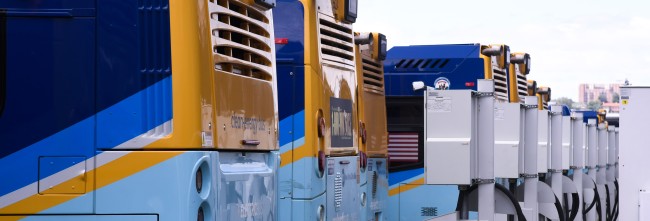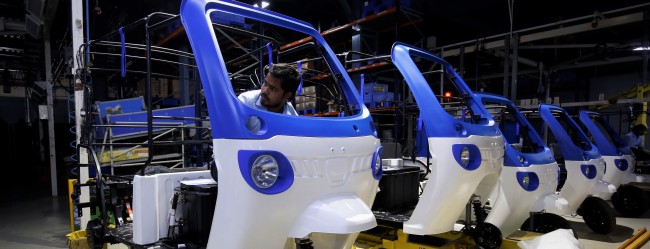Passenger cars are on the way to decarbonization, but they need a push to keep us on track for a 1.5 degrees C world.
The world is in the midst of a transformation in motor vehicles, with sales of electric vehicles (EVs) making up more than one in five car sales globally in 2024. Continuously falling vehicle and battery costs, improvements in battery performance, and the growing availability of charging infrastructure have made EVs mainstream, especially in China, where one in two cars sold are electric. As this transformation continues, it will have broad ramifications for the global automobile industry and global transport sector emissions. Still, there remains a gap to reach 75% to 95% by 2030, the range compatible with limiting warming to 1.5 degrees C (2.7 degrees F).
Progress on zero-emission trucks and buses needs a jolt, especially outside of China and Europe.
Progress on decarbonizing truck transport is not as advanced as it is with passenger cars, but there are promising signs. Several electric heavy-duty truck models are already commercially available or in an advanced stage of development, and electric medium-duty vehicles are starting to be rolled out in many corporate fleets.
Long-haul, heavy-duty trucks will be the most challenging class to decarbonize. Battery energy density for these models is currently a limiting factor, and recharge times affect corporate profitability. However, the newest trucks can travel 300 kilometers (km) on a single charge, and additional battery technology improvements are estimated to enable a 40 tonne truck to drive 400 km on a single charge by 2025, suggesting that there could be rapid technological change in even the heaviest vehicles.
Though hydrogen fuel cell models do not share the energy density challenges faced by battery electric models, they are still in the early stages of development and renewable hydrogen continues to be prohibitively expensive. In addition, hydrogen as a transport fuel must contend with the significant efficiency losses incurred through the production and transportation process — losses that are not a factor for battery electric models. Progress will require investments in hydrogen supply chains in addition to refueling infrastructure.
Progress on decarbonizing buses remains extremely uneven, with very high sales in China pushing the global sales share of electric models up significantly. A few European countries have also invested in electric buses. In the rest of the world, electric buses have yet to make large inroads.
Explore how electric vehicle sales have been growing exponentially due to falling costs, improving technology and government support, and the countries that are leading the charge.


